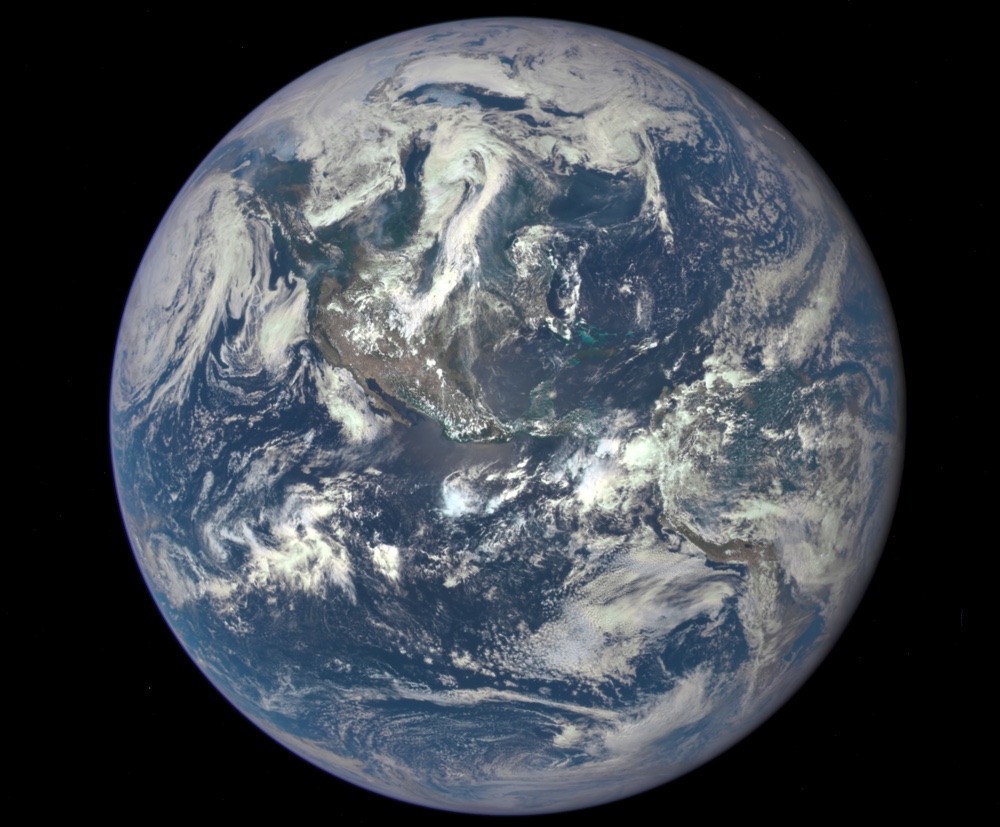Rapper B.o.B Is Trying to Launch a Satellite to Show the Earth Is Flat

A rapper-turned-flat-Earther is attempting to prove that the world is not round by crowdfunding his own satellite launch.
B.o.B, born Bobby Ray Simmons Jr., is a rapper from Georgia who once recorded a diss track about physicist Neil deGrasse Tyson, after the two got into a Twitter fight in 2016 about whether the Earth is round. The rapper is a member of the Flat Earth Society, a group of people who are convinced that the planet is flat, not round. A scroll through B.o.B's Twitter feed also reveals a number of other conspiracy beliefs: He is an anti-vaxxer, a 9/11 truther and also, for some reason, believes that oil does not form from the remains of organic material buried under pressure.
B.o.B's new GoFundMe has a $1 million goal and has raised $2,701 from 98 people in the five days since he put up the request. (He pledged the first $1,000 himself.) The goal, according to the rapper, is to launch a satellite as far into space as necessary to "find the curve" of Earth. [7 Ways to Prove the Earth Is Round (Without Launching a Satellite)]
How we know the Earth is round
Despite myths about Christopher Columbus believing he might sail off the edge of the Earth, humans have known that the world is round for a very, very long time. The Greek philosopher and mathematician Pythagoras left the first written arguments for a round Earth in 500 B.C. Ancient Greeks thought the sphere was the perfect shape, so it stood to reason, Pythagoras figured, that the Earth was spherical. A few hundred years later, according to the American Physical Society (APS), Aristotle dropped some scientific evidence into the debate. He pointed out that during lunar eclipses, Earth's shadow on the moon is curved; ships going over the horizon seem to drop down, hull-first, rather than becoming tinier and tinier until they disappear; and different stars are visible from different vantage points on Earth, which wouldn't make much sense if the planet were flat.
The Greek mathematician Eratosthenes, born in 276 B.C., even managed to determine the circumference of the Earth. He did this, according to the APS, by measuring the angle of the shadow of a stick stuck in the ground on the summer solstice in Alexandria, on what is today the Egyptian coast. He knew that in Aswan, Egypt (then known as Syene), the sun cast no shadows on the day of the solstice — it was directly overhead. The difference in the sun's angle between Syene and Alexandria corresponded to one-fiftieth of a complete circle, so Eratosthenes realized that if he knew the exact distance between the two cities, he'd just need to multiply to determine the full circumference of the Earth.
The mathematician had to hire surveyors to walk the distance with precisely measured steps, but he eventually landed on a total circumference for the planet of between 24,000 and 29,000 miles (39,000 to 47,000 kilometers). He turned out to be remarkably accurate: Around the equator, the planet's circumference is 24,900 miles (40,072 km).
Resurgence of flat-Earthers
So if the ancient Greeks had it figured out, how can anyone still believe in a flat Earth in the age of satellites and rocket launches? [Top 10 Conspiracy Theories]
Sign up for the Live Science daily newsletter now
Get the world’s most fascinating discoveries delivered straight to your inbox.
The resurgence of flat-Earth beliefs started in the early 1800s with a writer named Samuel Rowbotham, who developed an entire alternative cosmology around the idea that the Earth is a flat plane enclosed by a dome of space, surrounded by a perimeter of ice walls. Rowbotham's philosophy was that the Earth looks flat, from a human's point of view walking on the surface, so everyone who said they could show otherwise must be lying. The International Flat Earth Society, formed in 1956, draws from Rowbotham's views. In the mid-1990s, the president of the group claimed to have 3,500 paying members, according to his New York Times obituary. Today, the Flat Earth Society website claims to have 555 members, the most recent being B.o.B.
Flat-Earthers don't trust NASA or any other space agency. According to the Flat Earth Society's FAQs, astronauts are being bribed or coerced into lying; airplane windows distort views to make it look like the horizon curves; and the International Space Station is a hoax. Also, gravity isn't real.
An independent satellite launch may or may not convince B.o.B that the Earth really does curve, but he may find the process a bit difficult if he doesn't accept that the planet is round. To launch a satellite (or any other object) into space, you have to take into account the Earth's radius. In the formula for the speed needed to achieve orbit, V = sqrt (g0*Re^2/(Re + h)), "Re" is the mean planetary radius. Astronomer Johannes Kepler sorted this out in the 1600s, according to NASA.
It remains to be seen whether B.o.B will ever get a chance to launch a satellite, anyway. According to The Verge, GoFundMe has frozen the rapper's donation account, meaning he won't be able to access the funds unless he can provide more information that the money will not be mismanaged.
Original article on Live Science.

Stephanie Pappas is a contributing writer for Live Science, covering topics ranging from geoscience to archaeology to the human brain and behavior. She was previously a senior writer for Live Science but is now a freelancer based in Denver, Colorado, and regularly contributes to Scientific American and The Monitor, the monthly magazine of the American Psychological Association. Stephanie received a bachelor's degree in psychology from the University of South Carolina and a graduate certificate in science communication from the University of California, Santa Cruz.









